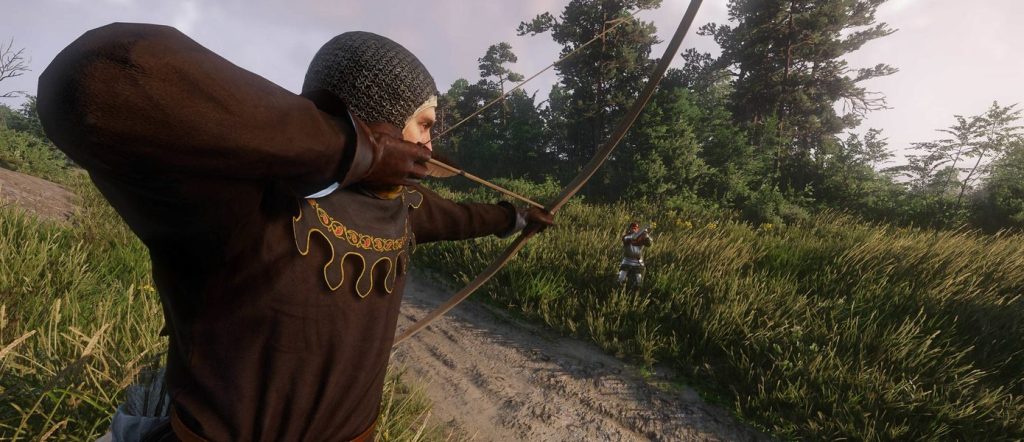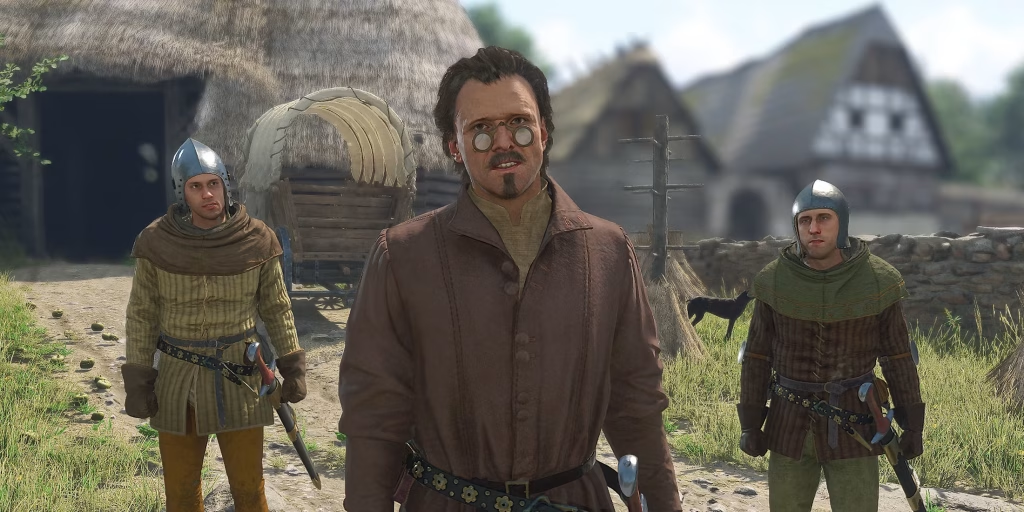Kingdom Come Deliverance II is an anticipated new release in the historical role-playing game genre for 2025. After the successful release of the first game seven years ago, Warhorse Studios has released a sequel that maintains the historical accuracy and detailed gameplay world of medieval 15th-century Bohemia. Kingdom Come Deliverance II has been eagerly anticipated by millions of fans of the original game. In the first 72 hours after its release, the game has sold over 1.2 million copies on PC and PS5, confirming its status as a hit.

A review of the Kingdom Come Deliverance II game: intrigue, war, and medieval realities
Kingdom Come Deliverance II continues the story of the first part and takes the player to Bohemia in 1423. The developers at Warhorse Studios have recreated the events of the Hussite Wars in great detail, making the game particularly interesting from a historical perspective. The player takes on the role of Henry, no longer a young blacksmith, but an experienced warrior caught up in complex political conflicts. The player participates in famous battles, including the Siege of Karlštejn Castle and the Battle of Usti nad Labem. The main storyline lasts about 45-50 hours of gameplay, which is 20% longer than the first part.
Kingdom Come Deliverance II: An Overview of Gameplay Features
 The concept retains the emphasis on realistic combat experience that the original game is known for. The developers have improved the combat mechanics: it is now possible to perform combo attacks, parry blows with a shield, and perform counterattacks. The complexity of battles has increased, but the clashes have become even more dynamic. Armor now takes into account the physics of damage more realistically: damage to the cuirass directly affects the hero’s protection. The skill system in Kingdom Come Deliverance II has been significantly expanded. New skills have been added that affect trade, diplomacy, and interaction with the environment. Every choice made by the player has an impact on the story’s progression, as the consequences of their decisions are reflected in the subsequent events and their relationships with characters and factions.
The concept retains the emphasis on realistic combat experience that the original game is known for. The developers have improved the combat mechanics: it is now possible to perform combo attacks, parry blows with a shield, and perform counterattacks. The complexity of battles has increased, but the clashes have become even more dynamic. Armor now takes into account the physics of damage more realistically: damage to the cuirass directly affects the hero’s protection. The skill system in Kingdom Come Deliverance II has been significantly expanded. New skills have been added that affect trade, diplomacy, and interaction with the environment. Every choice made by the player has an impact on the story’s progression, as the consequences of their decisions are reflected in the subsequent events and their relationships with characters and factions.
Is it worth playing on PC and PS5: Kingdom Come Deliverance II technical features
Continuing the review, it is impossible not to answer the question of whether it is worth playing Kingdom Come Deliverance II on different platforms. To understand which version to prefer, it is necessary to consider the differences in graphics, download speeds, hardware requirements, and the overall experience of the gameplay.
System Requirements for Kingdom Come Deliverance II on PC
To fully immerse yourself in the story, the developers have increased the system requirements by 40-50% compared to the first game. This is due to improved graphics, the use of ray tracing, and the use of high-quality textures with resolutions up to 4K. According to Warhorse Studios, the minimum requirements for running the game include Windows 11, 16 GB of RAM, and Intel Core i7-9700K or AMD Ryzen 7 3700X processors.
The minimum requirements include a NVIDIA GeForce RTX 3060-level graphics card (8 GB of video memory). This configuration allows you to play at Full HD resolution with a frame rate of around 50-60 FPS, but with ray tracing disabled. If you want to experience the full graphical potential of Kingdom Come Deliverance II, we recommend a graphics card at least as powerful as the NVIDIA GeForce RTX 4070 (12 GB of memory) or the equivalent AMD Radeon RX 7800 XT. This configuration will ensure a stable 60 frames per second and image quality on par with modern top-of-the-line projects with realistic lighting and shadows.
In addition, the game requires an SSD drive. The required free space is at least 85 GB. This is due to the highly detailed textures, realistic locations, and large amounts of data that are continuously loaded during gameplay.
The PS5 Gaming Experience: Comfort and Advanced Technology
The gameplay on the PlayStation 5 console is significantly different from the PC version. The main advantage is the full optimization for the platform’s hardware capabilities. The game supports ultra-fast SSD technology, which reduces loading times to 1-3 seconds, almost eliminating the need to wait between scene transitions or fast movements around the map. These loading times on the PS5 provide a more comfortable and smooth gaming experience compared to a mid-range PC.
The console version also makes extensive use of the DualSense controller’s features. The haptic feedback and adaptive triggers allow players to experience the weight of a sword in their hands, the tension of drawing a bow, or even the fatigue of a character after a long ride. These technologies enhance the realism of Kingdom Come Deliverance II on PS5, allowing players to fully immerse themselves in the game’s atmosphere and combat mechanics. The console version’s graphics meet the high standards of modern AAA games, with stable 4K resolution and a minimum frame rate of 60 FPS, utilizing a dynamic scaling system. This allows you to maintain a smooth image even during the most intense events on the screen.

An overview of Kingdom Come Deliverance II’s quirks and flaws
Despite the high level of execution, the new game was plagued by a number of technical issues at launch, which the developers promptly fixed with the 1.1 patch. For example, 12% of PC players experienced issues with texture display and saves. Additionally, there was an inaccuracy in NPC behavior during side quests, but the developers promptly addressed this issue a week after release.
Conclusion
 Answering the main question of the review, is it worth playing Kingdom Come Deliverance II — the answer is definitely positive. The game turned out to be large-scale, deep in plot and technically advanced. The developers took into account the experience of the first part and offered gamers improved combat mechanics, a unique historical plot, realistic tasks and a rich medieval world. Kingdom Come Deliverance II is perfect for fans of serious RPGs and immersing themselves in the atmosphere of the Middle Ages.
Answering the main question of the review, is it worth playing Kingdom Come Deliverance II — the answer is definitely positive. The game turned out to be large-scale, deep in plot and technically advanced. The developers took into account the experience of the first part and offered gamers improved combat mechanics, a unique historical plot, realistic tasks and a rich medieval world. Kingdom Come Deliverance II is perfect for fans of serious RPGs and immersing themselves in the atmosphere of the Middle Ages.
 en
en  ru
ru  de
de  ar
ar  es
es  hi
hi  fr
fr  nl
nl  it
it  pt
pt  el
el 









